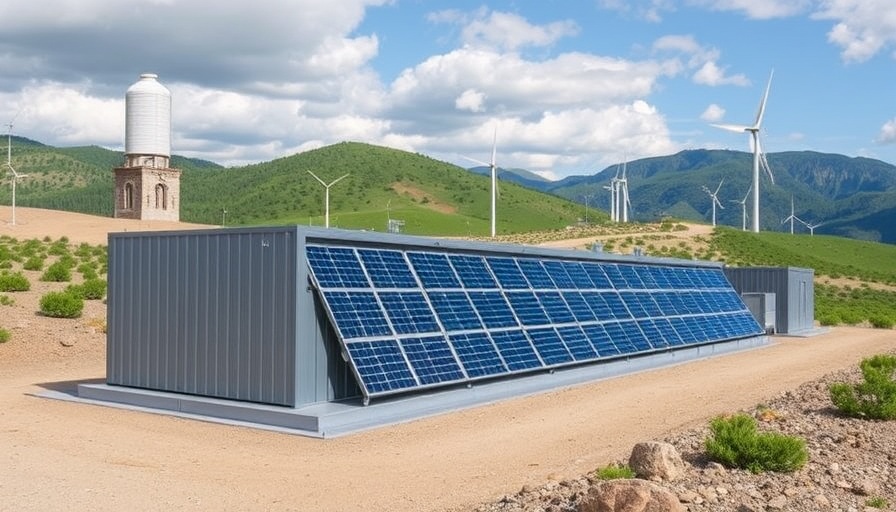
Unlocking the Energy Transition in the Netherlands
The Netherlands is on the brink of a bold energy transformation, heralded by initiatives from TenneT, the country’s transmission system operator. This transformation offers insightful lessons for other nations aiming to bolster sustainability through innovative energy practices. As the Dutch nation aggressively pivots toward renewable energy sources, it not only seeks to reduce carbon emissions but also endeavors to create a more resilient power infrastructure.
Integrating Renewable Resources: A Strategic Approach
The Netherlands aims to enhance its electricity grid's resilience, integrating more renewable energy sources like wind and solar. TenneT has been at the forefront, leading pilot projects deploying new technologies for grid connection. With renewable energy expecting to supply over 70% of the grid by 2030, the establishment of innovative frameworks that manage supply and demand effectively will be crucial.
Lessons from European Peers: A Community Effort
The Netherlands isn't working in isolation. By partnering with fellow European nations, they have cultivated a rich bank of shared knowledge and best practices in green energy deployment. Countries such as Germany and Denmark have pioneered methodologies in integrating renewable resources, which the Netherlands can adapt. This collaborative spirit exemplifies the philosophy that innovation is most powerful when shared, and it sets a foundation for future progress.
Open Grid: Unlocking Data for Better Solutions
A critical aspect of TenneT's strategy is promoting an open data ecosystem. By allowing data access among stakeholders, from governments to energy providers and consumers, TenneT encourages innovative solutions that can lead to efficiency gains and better service delivery. This transparency empowers citizens and enterprises alike to engage actively in energy management, aligning with today's demand for sustainable practices.
Investment and Innovation: The Future of Energy
As the Dutch government increases investments in energy transition R&D, innovative technologies like smart meters, energy storage solutions, and smart grid systems are being prioritized. The shift to digital infrastructure not only aims to optimize grid management but also facilitates the integration of decentralized energy production, where households and businesses generate their own renewable energy.
Looking Ahead: Future Predictions and Opportunities
As we gaze into the future, several trends indicate sustainable energy will play a transformative role in shaping not just the power sector but also the economy as a whole. Expectations for a greener economy align with public sentiment, showing that consumer demand for eco-friendly practices increases significantly. Furthermore, countries that proactively invest in renewable technologies stand to gain economically, creating jobs and enhancing global competitiveness.
This Isn't Just About the Netherlands
The Dutch initiatives can serve as a blueprint for other nations facing similar energy challenges. By pooling resources, fostering innovation, and ensuring transparency, governments worldwide can cultivate a robust framework for transitioning toward renewables. The future of energy lies in collaborative endeavors, innovative thinking, and the willingness to engage with the global community.
 Add Row
Add Row  Add
Add 




Write A Comment